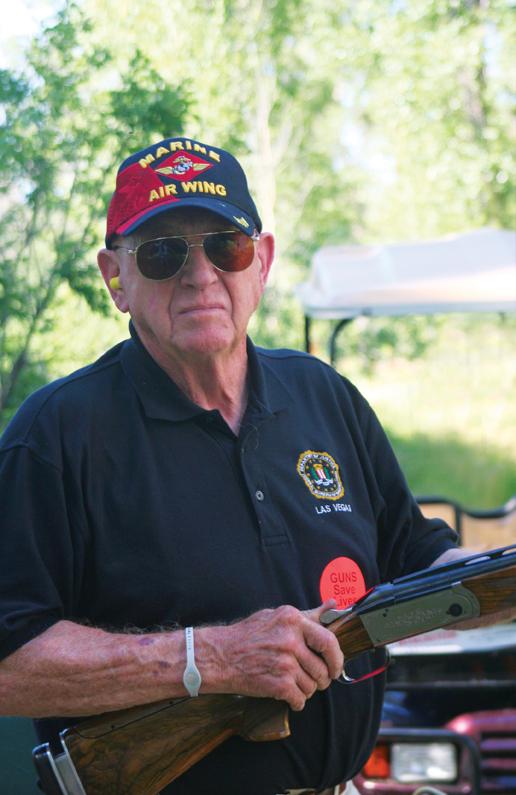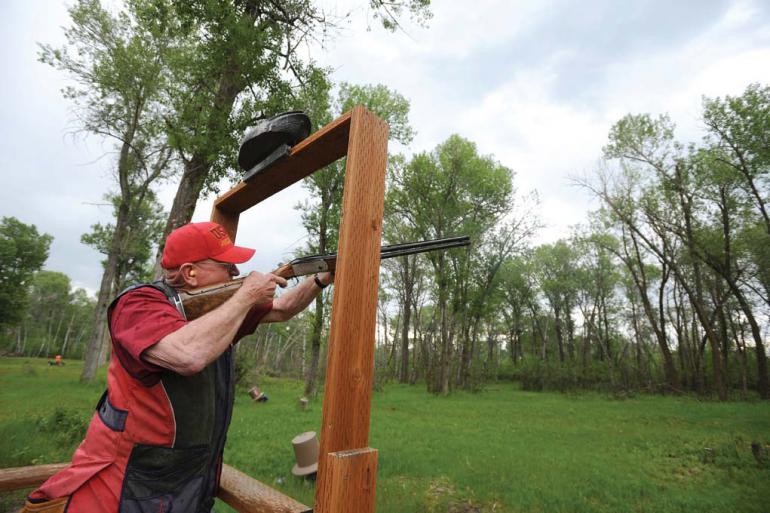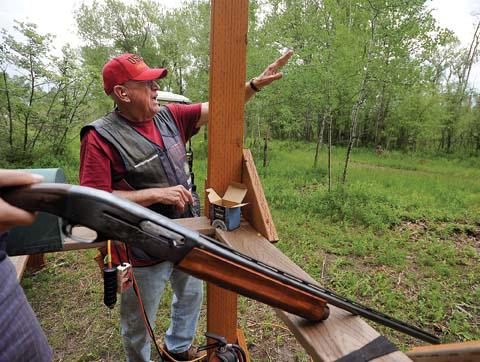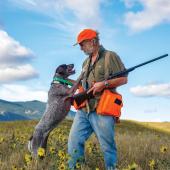Doctor’s Orders
I knew something wasn’t working, but I just couldn’t put my finger on it. The presentation came from two traps hidden in the trees to my right. The first clay pigeon—a hard, right/left crosser—passed in front of me in a flat, low arc, and it was smoking. The second, also a right/left crosser, traversed the same path but had the brakes on. It was what some shooters call a lollipop: a bird that loops up and then down in a slow, gentle arc. Lollipops are killers—they poke along so slowly that they’re tough to hit. They can make soup out of your reflexes.
I was stinking up the place. I’ve shot enough sporting clays to know what I’m doing, but not enough to be really good at it. Doc Bradford, the owner of the Rising Spirits Sporting Clays course, was trying valiantly to narrow the gap. Finally, I gave up. I ejected the shells in my gun, stuffed the empties in my vest, and backed out of the station.
Bradford peered up at me from his golf cart and grinned. “Next time,” he said, “move your gun closer to the house [the traps]. You’ll pick up gun speed and have more time on that second bird.” Suddenly, the hundreds of dollars I’d spent on shooting lessons came flooding back: Gun speed kills birds. I could have saved myself the money and just gone shooting with Doc.
The game of sporting clays, for better or worse, has evolved into a game of shooting at tricky, optical illusions that course-setters create with the express purpose of making good shooters miss. Good shooters enjoy the challenge—most, in fact, wouldn’t have it any other way—but that same course can leave the average hunter, or a casual shooter who doesn’t spend every weekend practicing, frustrated and discouraged. If he doesn’t know where he’s missing, how can he improve? Bradford’s goal was to create a course that the average shooter would enjoy, yet offer enough challenge to keep interests piqued.
Although I’ve been a sport shooter for a decade or so, my background and first love is bird hunting. I’ve hunted most of the game birds in North America and a representative portion of the waterfowl in the last 40-some years. Given that background, I can say with confidence that most of the presentations at Rising Spirits represent shots you would encounter in the field, but with just enough difficulty to make you think about what you’re doing.
For the hunter looking to juice his mojo before the season opens, this is the place to go—but don’t expect a cakewalk. There were plenty of challenging stations on the day I was there, and Bradford changes the course every few weeks so that a good field shot will have to be on his toes to shoot a respectable score. Some of the presentations, such as springing teal (a bird thrown almost vertically into the air) and rabbits (a target bounced along the ground), take actual hunting shots and spice them up by adding speed and distance. They’re really fun once you learn how to shoot them, but there is a bit of a learning curve. Still, there’s nothing here beyond the grasp of a decent field shot. Beginners, on the other hand, will benefit immensely from a lesson or two.
Which is probably a good time to bring up another point: Doc Bradford is also a certified shooting instructor. Oddly enough, if it weren’t for compound bows, he might never have been a shotgun shooter at all.
Bradford, 77, grew up in Michigan during the fifties and sixties, which in those halcyon years was experiencing exponential growth in bowhunting and field archery, largely due to one man: the world-famous bowhunter Fred Bear. Turns out Fred Bear was almost a neighbor of Bradford’s, and the two of them ended up shooting tournaments and demonstrations together when Bradford was still just a kid. Shooting with Fred Bear left stars in young Bradford’s eyes, and he was hooked for good. To this day, he has a couple dozen archery trophies in his stunning log home overlooking the Gallatin River.
But the advent of compound bows left a bad taste in his mouth. Suddenly, anybody could become a good shot without a lot of effort. Bradford, who had been an athlete all his life, felt the challenge lacking. He was in his early 40s.
“I just gave up archery when the compounds came out,” he says. “Then I got invited to shoot skeet. I thought, ‘Hell, I’m this good in archery, I’ll be wonderful at this.’” He pauses for dramatic timing, his eyes twinkling. “I shot a four. I shot again and I shot a three.” Bradford, who was a college basketball player, once had a tryout with the Chicago Cubs and traveled the world as an oral surgeon in the Navy. He says he decided right then and there that shooting a four on a 25-bird course was never gonna fly.
Characteristically for Bradford, he dove into shotgun shooting with both feet. He took hundreds of hours of lessons and shot tens of thousands of shells. Eventually, he would win local, state, and national championships and shoot all over the U.S. and Europe. So when he told me I needed to hold my gun closer to the house, or that I wasn’t focusing on the first bird of a true pair—an ongoing issue with me—I listened.
Bradford ferried me around in his golf cart, but the course is a dead-flat, 200-yard walk in the shade of cottonwoods along the Gallatin River. On the day I shot, it was a scorcher, but the river bottom was cool and pleasant. About half the stations are tucked into the trees, and the targets fly in and around the cottonwoods, sometimes in the sun, sometimes in the shade, sometimes arcing over treetops into the blue, Montana sky. The place is home to whitetail deer, red-tailed hawks, song birds of all types, the occasional bear, and a family of marmots that get their kicks teasing Bradford’s lumbering spaniel, Clarence. We spent a couple hours shooting and talking, and at the end of the day, I wasn’t sure what I had enjoyed more: the course or Bradford’s stories. Shooting with Doc is like taking lessons from the funniest college professor you ever had in your life.
So with bird season just upon us, go to Doc’s course and shoot a round or two. You’ll hit more than you miss, and the ones you miss won’t kill you. Tell them the guy with the shooting issues sent you.
Shooting School Info
Feel like giving it a shot? A yearly membership at Rising Spirits will grant you access to open shooting, participation in leagues, and special events throughout the year. If you just want to come check things out, open shooting is every Wednesday and Friday, 12pm to 7pm, and Saturday, 10am to 4pm. Nonmember shooting fees are $45 for 100 clays or $30 for 50, and the course features 11 shooting stations. “It’s like golf with noise,” says Bradford. “No two shots are the same.” Check out docbradford.com or call 388-4051 for more info.—Dave Reuss















